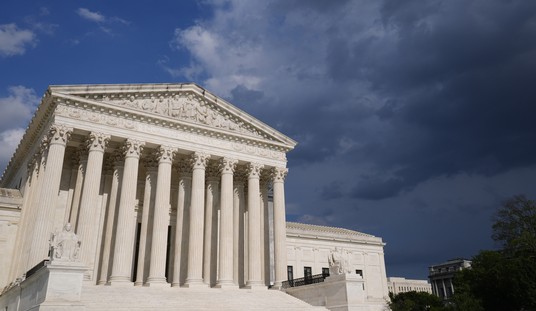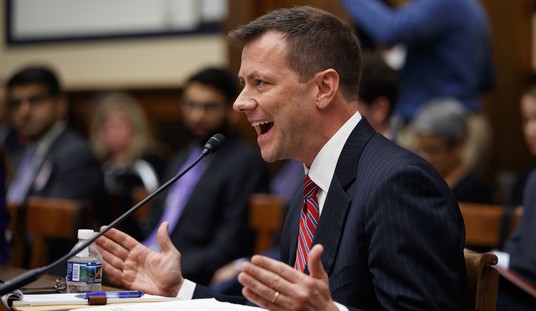If we are to maintain our modern, technological lifestyles, something all reasonable people see the value of, then we require access to mineral wealth; in fact, pretty much everything on the periodic table. These materials don't grow on trees; they are found underground, usually in areas that are or were volcanic, as many of them come near the surface borne on the flows of magma up volcanic vents.
Here in the United States, we have a lot of these minerals, including the very valuable rare-earth elements. We have some right here in Alaska, in fact, and the Trump administration has been pushing the process of going after these materials here in the Great Land. But these and other valuable minerals are not just found here in Alaska, but indeed all over the western United States - and we need to start to exploit those resources, as well, as the other primary option is unacceptable - dependency on China.
A recent piece at Watts Up With That by guest columnist Paul Driessen, who is a senior policy analyst for the Committee For A Constructive Tomorrow, lays out some details that are worth reading.
In the Stone Age, humans relied on flint and obsidian. The Bronze Age utilized copper, tin and lead, plus gold and silver. The Iron Age prioritized iron and carbon. Today, we need almost every element in the Periodic Table, plus countless non-metallic minerals.
However, without any attempt to determine what deposits might lie beneath, decisionmakers have made hundreds of millions of acres of America’s “public lands” off limits to exploration and mining, primarily in Alaska and the eleven states west of the Dakotas. They’re managed by federal agencies for nearly every activity and value except potential subsurface treasures.
In fact, well over two-thirds of those lands have been effectively placed under lock and key: an area larger than Arizona, Colorado, Montana, New Mexico, Utah and Wyoming combined!
Of course, some places are so unique, magnificent or ecologically priceless that they should be off limits to resource extraction – from Arches to Zion National Park. But America cannot afford wide buffer zones around them, much less buffer zones around the buffer zones.
And yet that's precisely the position we've been in for several decades now, until the advent of Trump. China is a primary source for too many of these materials at the moment, China and Russia. Is there anyone who doesn't see the problem inherent in that? Is there anyone who doesn't see the need to reduce or eliminate our dependence on China? Yes, these recovery efforts, both shaft mining and open-pit mining, will cause some environmental damage. But that's a price we must be willing to pay.
Read More: Chinese Economic Coercion, Rare Earth Minerals, and Tariffs: Decouple Now or Never
Here's the thing: Mining here in the USA will have much less environmental impact than mining in China or Russia. As Paul Driessen points out:
Any open pit or underground mining may change land contours, perhaps dramatically, from what we see today, but this is for major metal ore bodies that are vitally important to America; occur very rarely; and average 3-5 square miles Washington, DC is 61 sq mi) for open pit mines, including the mine, processing plants, waste dumps (overburden and tailings), settling ponds, access roads and inactive areas.
All US operations are conducted under strict environmental protection, pollution prevention, waste rock disposal, workplace safety and land reclamation regulations.
While we can agree on reasonable environmental regulations to ensure as efficient a process as possible - and remember, efficient processes are often clean processes - for too long, these environmental regulations have been used to halt, not oversee, mining. No mining at all, anywhere, for anything, at any time, is the goal.
So, we buy minerals from China instead. In fact, a part of President Trump's new deal with China has as one condition an agreement for still more U.S. purchases of rare earth and other vital minerals.
Read More: Trump Meeting With Xi: 'We Have a Deal'
As long as we're on good terms with China, that's great. It will be months, maybe years, before our domestic sources can start delivering. But being in a position where we are dependent on China's goodwill is not a good place for us to be.
The Committee to Unleash Prosperity presents some interesting numbers on America's estimated mineral wealth:
The United States is blessed with some of the richest supplies of mineral wealth anywhere in the world. The total value of American domestic mineral reserves was estimated by the National Mining Association at $6.2 trillion in 2017. We estimate that given the higher inflation and improved mining tech, those mineral resources are now worth closer to $12 trillion. In addition, mining these minerals would raise up to $1 trillion in revenues to the Federal Government. According to the U.S. Geological Survey (USGS), “mineral reserves” are that portion of an identified resource from which a usable mineral (or energy) commodity can at the present be economically and legally extracted. In other words, mineral reserves are minable now.
Here in the Great Land, we'll be glad of the jobs, the development, and yes, the wealth that mining and energy development will bring to Alaska. But we have to look beyond Alaska. The United States has vast deposits of mineral wealth. We can get it. We can do it now more efficiently, with less environmental damage than ever before - certainly with less environmental damage than similar operations in China or Russia.
If America is going to remain the world's economic superpower, this must be done. We need to not only develop our energy wealth, but also our mineral wealth, and the time to start was yesterday.














